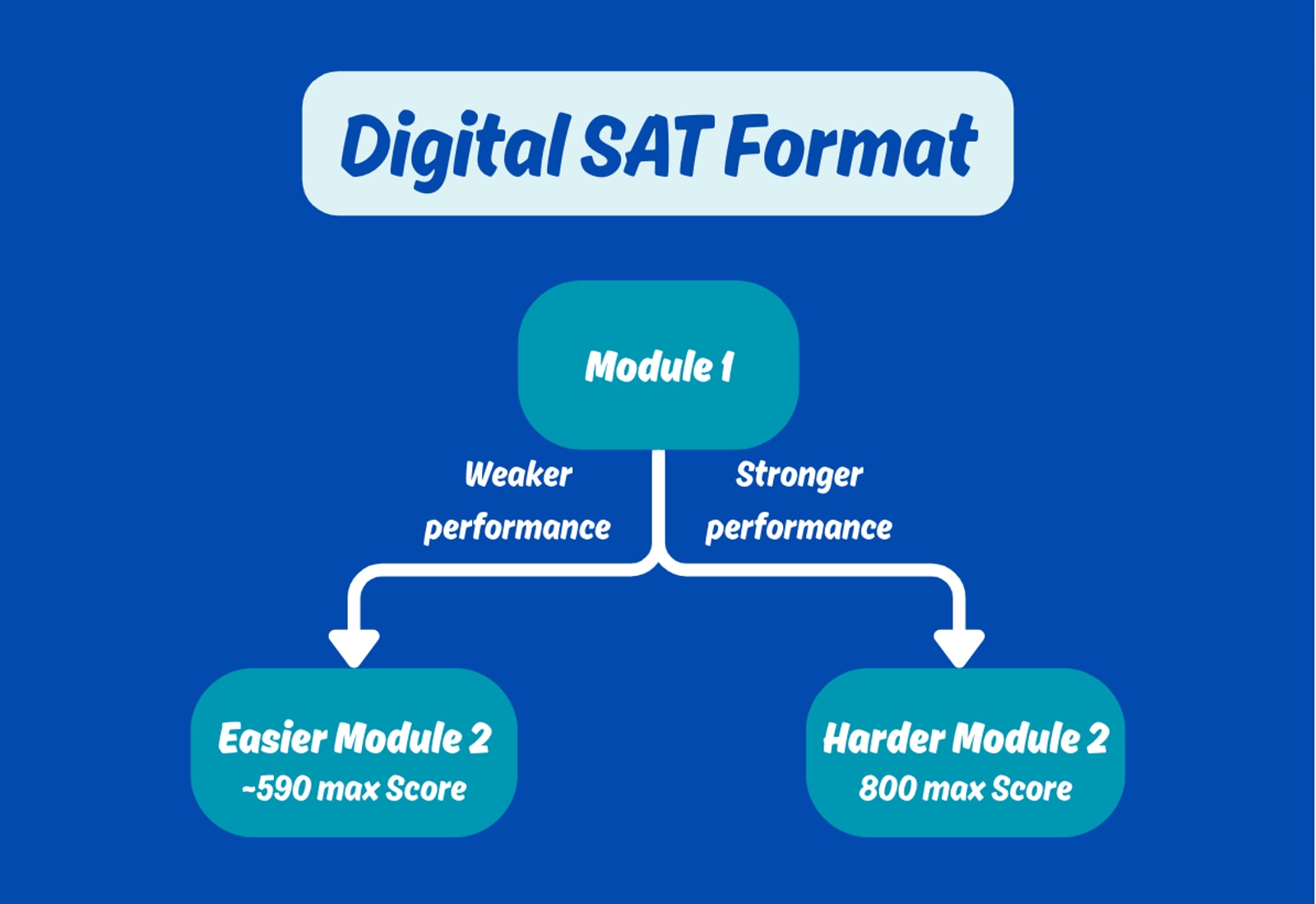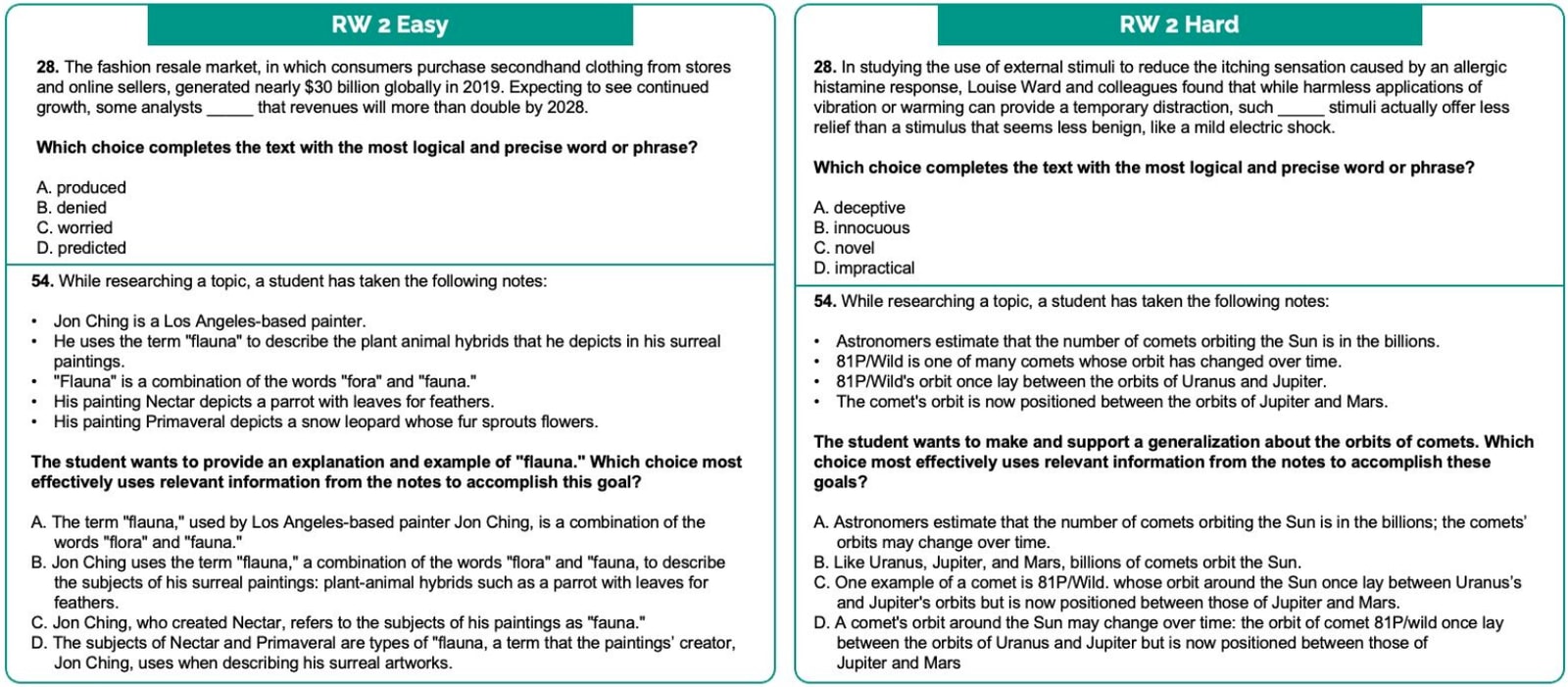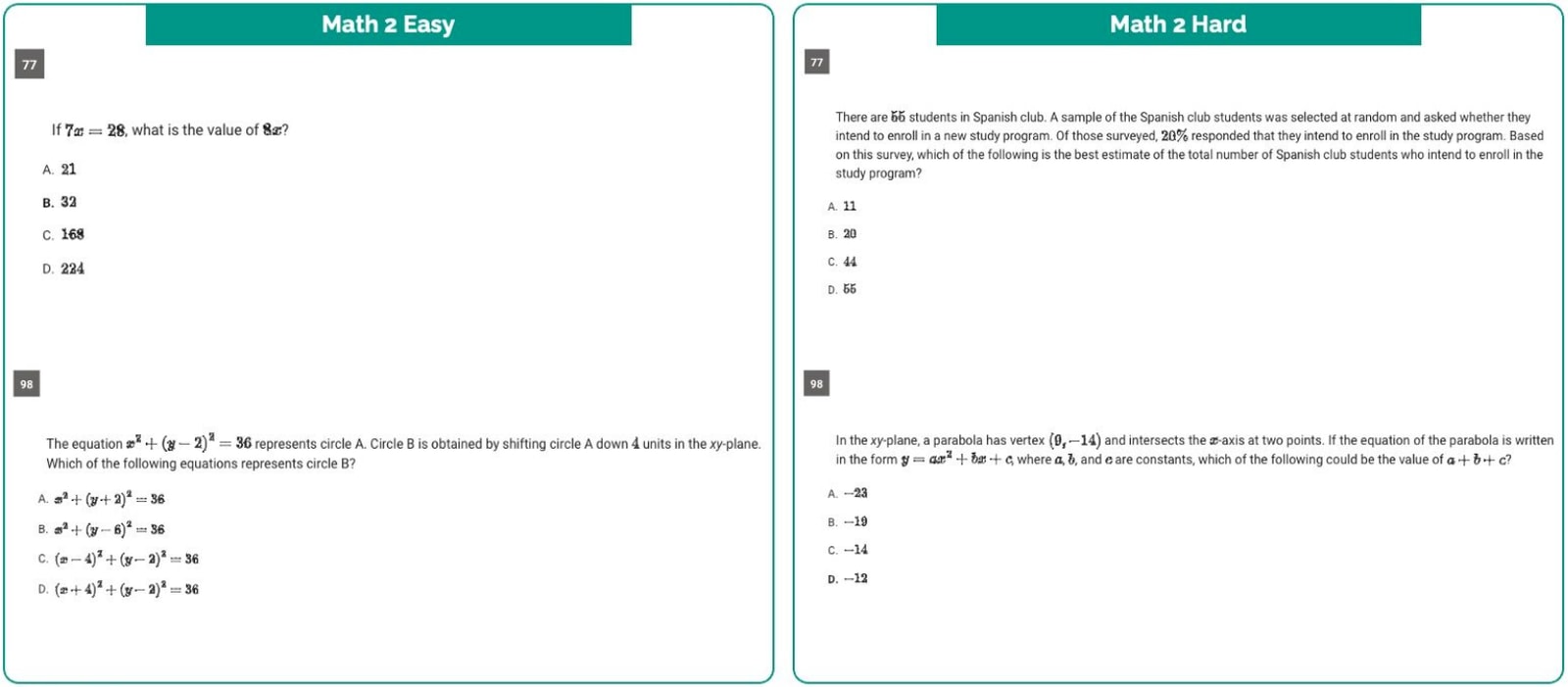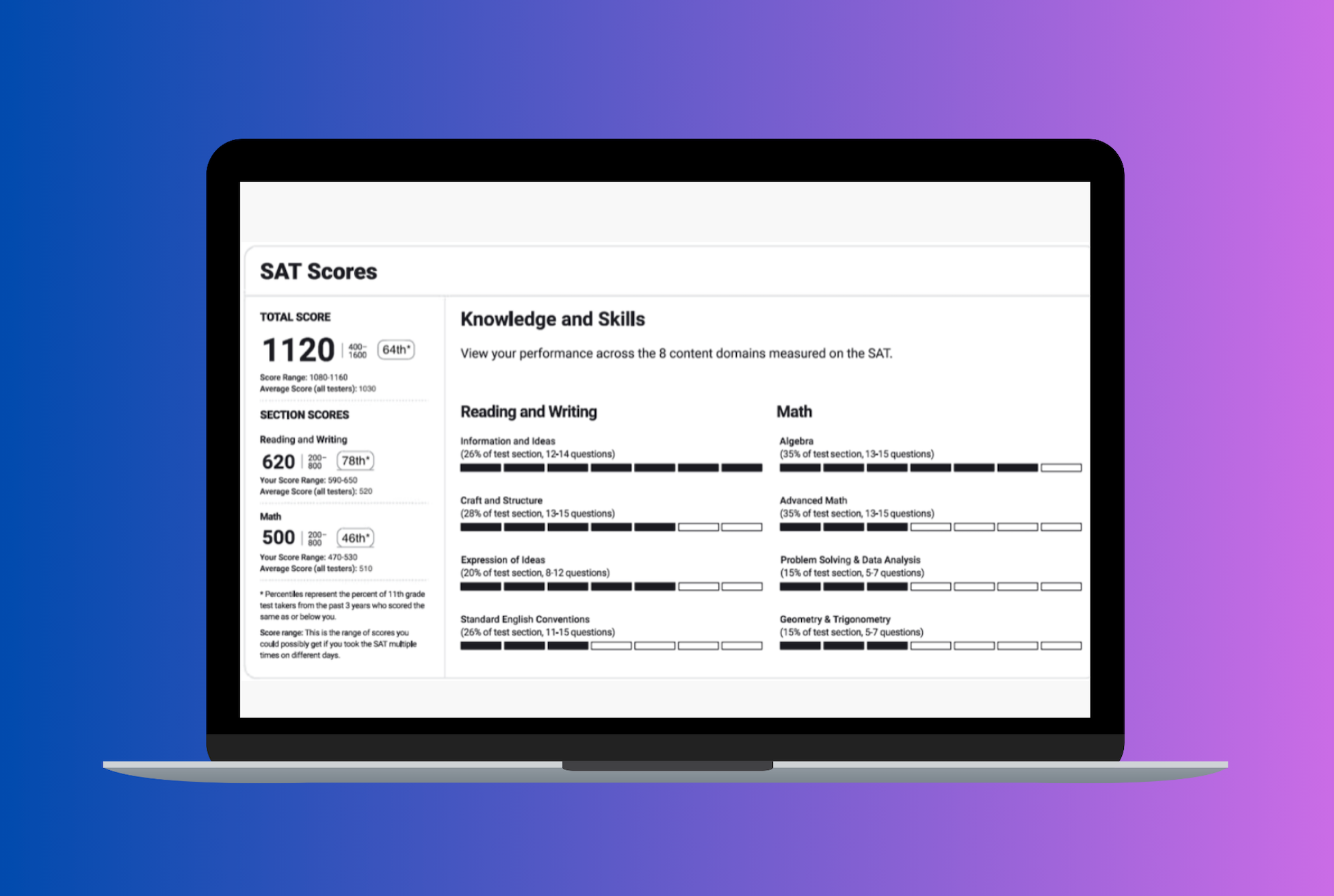How the Digital SAT’s Easy and Hard Modules Impact Your Test Experience
Author
Phoenix Wilder
Date Published

Nearly a century after its inception, the SAT has undergone a revolutionary transformation. The College Board’s redesign of this staple college admissions exam has shifted it to a fully digital platform, introducing “adaptive modules” to enhance the testing experience. Officially launching in 2024, the new Digital SAT ushers in significant changes that aim to better align with students’ learning environments and provide a more personalized assessment of their skills.
Let’s break down the changes, the adaptive module structure, and how the easy and hard modules stack up against each other.
Key Features of the New Digital SAT
1. A Fully Digital Experience
Students will now take the SAT using approved devices, such as laptops or tablets, via the College Board’s Bluebook app. Though digital, the test must still be administered in-person at designated testing centers. By digitizing the exam:
- Cheating opportunities are reduced.
- The grading process is faster, so results are delivered more quickly.
2. Shorter Test Duration
The test has been condensed and reorganized to save time while maintaining rigorous assessment. Here’s a summary of the updated structure:

Key sub-sections like the Reading and Writing tests have been combined, and long reading passages have been replaced with concise mini-passages. Similarly, the math section no longer divides into "Calculator" and "No Calculator" sections.
3. Adaptive Testing with Modules
Unlike paper tests, the Digital SAT can adjust to students’ individual performance in real-time:
- Each exam section (Reading & Writing, and Math) consists of two modules.
- Everyone starts with a “Normal” Module 1, which contains a mix of easy, medium, and hard questions.
Performance on Module 1 determines the difficulty of Module 2:
- High-performing students move to a harder Module 2B.
- Students who struggle proceed to an easier Module 2A.
How Adaptive Testing Works
Module 1: The Common Starting Point
The first module features a balanced mix of questions from all topics. For instance, in the math section:
Questions progress from the easiest to the hardest.
Content and difficulty are uniform across test-takers, allowing fair comparisons.
Though questions in Module 1 may slightly vary between students, differences are minor, ensuring each test-taker has a nearly identical baseline experience.
Module 2: Adaptive and Personalized
The second module is where the adaptive format shines:
Module 2A (the easier second module) provides a larger proportion of simple questions, ideal for students who faced challenges in Module 1.
Module 2B (the harder second module) contains tougher individual questions while covering the same overall topics as Module 2A.
Scoring Implications of Module Selection
Scoring is adjusted to account for the difficulty of questions in Module 2. For instance:
Completing Module 2A caps a student’s section score at approximately 590 out of 800, even if all questions are answered correctly.
Module 2B offers access to the highest possible scores (up to 800).
This structure ensures fairness, rewarding high-performing students while reducing frustration for those still developing their skills.
Comparing the Easy vs. Hard Modules: What Do They Look Like?
To illustrate how the adaptive module system affects test difficulty, let’s examine specific examples from the Reading and Writing and Math sections based on College Board’s official practice test 4.
Reading and Writing: Easy Module vs. Hard Module

- Question 28 (Vocabulary-in-Context):
The easy module’s passage is much shorter (38 words) and simpler in context and vocabulary (e.g., “predicted”).
The hard module passage is significantly longer (55 words, ~45% more) and tests a more sophisticated vocabulary word (e.g., “innocuous”) in a scientific study context.
- Question 54 (Summarizing Key Points):
The easy module focuses on simpler subject matter (e.g., paintings) and uses straightforward language.
The hard module introduces scientific terminology and expects the student to summarize a more complex argument (e.g., related to comets).
Key Observations:
The easy module leans toward familiar, everyday subjects and straightforward questions.
The hard module demands more intricate reasoning, reading comprehension, and the ability to interpret scientific or academic language.
Math: Easy Module vs. Hard Module

- Question 77 (Basic Computation Challenge):
The easy module asks for straightforward computation with minimal reading.
The hard module embeds a mathematical problem (e.g., calculating 20% of 55) within a 72-word problem, requiring students to parse through dense text before proceeding.
- Question 98 (Complex Problem-Solving):
The easy question involves knowing the equation of a circle and solving directly.
The hard question, involving parabolas, expects multiple steps, including deriving and analyzing an equation based on two solutions.
Key Observations:
While both modules cover the same topics, the hard module emphasizes complex problem setups requiring greater abstract thinking and multi-step solutions.
Easy modules avoid overwhelming students with verbose or conceptually advanced scenarios.
Preparing for the Digital SAT
Adjustment to the new SAT format requires strategic preparation. To excel:
Familiarize Yourself with Digital Tools: Download the Bluebook app and practice navigating its tools, like the onscreen calculator and flagging system.
Sharpen Your Adaptability: Practice tackling both easy and hard question types, so you’re ready regardless of the module you receive.
Focus on Time Efficiency: Learn to budget your time for each module, particularly as question complexity increases.
The Digital SAT’s adaptive module system introduces a fairer, more personalized testing experience—enabling students to demonstrate their knowledge in a format that matches their skill level. While the new format may seem intimidating, proper preparation and familiarity with the changes can help you excel.
Platforms like Best SAT Score can streamline your preparation by offering AI-driven study plans, adaptive Full-Length practice tests, and a question bank with detailed explanations tailored to both easy and hard modules. With the right tools and a strategic approach, you can confidently adapt to the innovative Digital SAT structure and achieve your target scores.
Related Posts

Learn how the digital SAT score report simplifies performance metrics, offers visual tools, and helps you focus your prep for top scores.